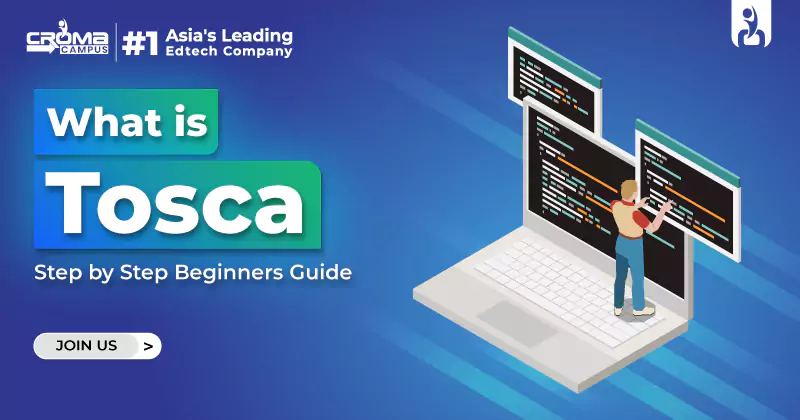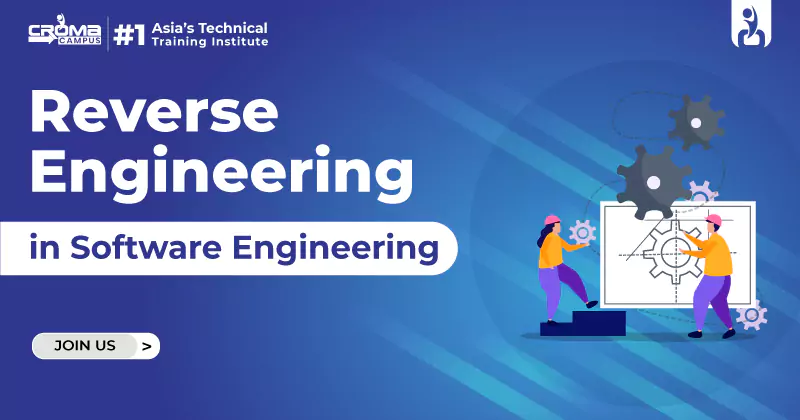Reverse Engineering In Software Engineering
4.8 out of 5 based on 9587 votesLast updated on 19th Jul 2024 16.98K Views
- Bookmark

Know all about Reverse Software Engineering – Definition, Objectives, Process, Tools, and More Definition, Objectives, Process, Tools, and More

Introduction to Reverse Engineering
Software Reverse Engineering is the process of analysing a software system to recover its design, requirements, and functionalities from its code. This method involves building a program database and generating information to understand and replicate the system.
This article delves into the intricacies of reverse engineering, its objectives, goals, and practical applications. Also, we will explain how our automation software testing course may help you master all the necessary reverse engineering skills.
What is Reverse Engineering?
Reverse engineering involves extracting design details from source code. The level of abstraction, completeness of documentation, the collaboration between tools and human analysts, and the directionality of the process can vary significantly.
Objectives of Reverse Engineering
- Reducing Costs: By identifying cost-effective alternatives or replacements for systems or components, reverse engineering can significantly reduce product development expenses.
- Security Analysis: Used in cybersecurity, reverse engineering helps in examining exploits, vulnerabilities, and malware, aiding security experts in developing robust defences.
- Integration and Customization: Developers can modify or incorporate hardware or software components into existing systems to enhance functionality or tailor them to specific needs.
- Recovering Lost Source Code: It can help recover or produce higher-level representations of source code that is lost or inaccessible.
- Bug Fixing and Maintenance: Reverse engineering assists in identifying and repairing flaws or updating systems where the original source code is unavailable or poorly documented.
Goals of Reverse Engineering
- Handling Complexity: It helps understand and manage complex systems, revealing details about architecture, relationships, and design patterns.
- Information Recovery: Aimed at retrieving lost or unavailable information, including source code, data structures, and design details.
- Detecting Side Effects: Analysing a system’s behavior to identify unintended implications, dependencies, and interactions not apparent from the original documentation or source code.
- Higher Abstraction Synthesis: Building higher-level representations from low-level features to facilitate better understanding and communication of the system’s functionality.
- Reuse Facilitation: Identifying reusable parts or modules in existing systems to improve efficiency and reduce development time for new projects.
You May Also Read These Posts:
Software Testing Strategies in Software Engineering
Different Types of Software Testing
Data Flow Testing in Software Testing
Dynamic Testing in Software Testing
Reverse Engineering to Understand Data
Reverse engineering of data is often the first task in reengineering efforts and occurs at different levels of abstraction.
- Program Level: Internal program data structures are reverse engineered to understand the overall system better.
- System Level: Global data structures, such as files and databases, are reengineered to support new database management paradigms like relational or object-oriented systems.
Internal Data Structures
Techniques focus on defining classes of objects by examining program code to group related variables. Data organization often identifies abstract data types such as record structures, files, and lists.
Database Structures
Reengineering a database schema requires understanding existing data objects and their relationships. Steps include:
- Building an initial object model.
- Identifying candidate keys by examining attributes that point to other records or tables.
- Refining tentative classes.
- Defining generalizations.
Reverse Engineering to Understand Processing
Understanding processing involves extracting procedural abstractions from source code, analyzed at different abstraction levels: system, program, component, pattern, and statement.
- Functional Abstraction: Creating block diagrams to represent interactions between programs.
- Procedural Abstraction: Developing narratives for each component’s subfunctions.
For large systems, a semiautomated approach is often used, combining automated tools and human analysis to understand code semantics. This output aids in restructuring and forward engineering processes.
Steps of Software Reverse Engineering
Our automation software testing course will also help you to understand important steps in reverse software engineering.
- Information Collection: Gather all available information about the software, including design documents.
- Examining Information: Study the collected data to understand the system.
- Extracting Structure: Identify program structure through structure charts.
- Recording Functionality: Document processing details of each module using structured languages like decision tables.
- Recording Data Flow: Create data flow diagrams from the extracted information to show data movement among processes.
- Recording Control Flow: Document the software’s high-level control structure.
- Reviewing Extracted Design: Ensure consistency and correctness by reviewing the design document multiple times.
- Generating Documentation: Produce comprehensive documentation, including SRS, design documents, history, and overviews for future reference.
You May Also Read These Posts:
Black Box Testing in Software Engineering
Software Testing Interview Questions
Software Testing Certifications in Demand
Reverse Engineering Tools
Automated tools support reverse engineering by processing source code to produce structural, procedural, data, and behavioural designs, saving time and reducing human labour. Key tools include:
- CIAO and CIA: Graphical navigators and collections of reverse engineering tools for software and web repositories.
- Rigi: A visual software understanding tool.
- Bunch: A software clustering/modularization tool.
- GEN++: An application generator for developing analysis tools for the C++ language.
- PBS: Software Bookshelf tools for visualizing program architectures.
Boost Your Career with Our Software Testing Course
Are you looking to excel in Quality Assurance? Enroll in our Software Testing Course at Croma Campus to gain hands-on experience with the latest testing methodologies, automation tools, and industry best practices.
This software testing course covers practical projects and real-life scenarios, providing a comprehensive learning experience.
Whether you are a beginner or seeking to enhance your existing skills, our Automation Software Testing Course equips you with the competence needed to ensure software quality and reliability. Ready to master Jira for Software Testing? Enroll now in Jira Training and elevate your career to the next level!
Subscribe For Free Demo
Free Demo for Corporate & Online Trainings.

























.webp)

.png)















